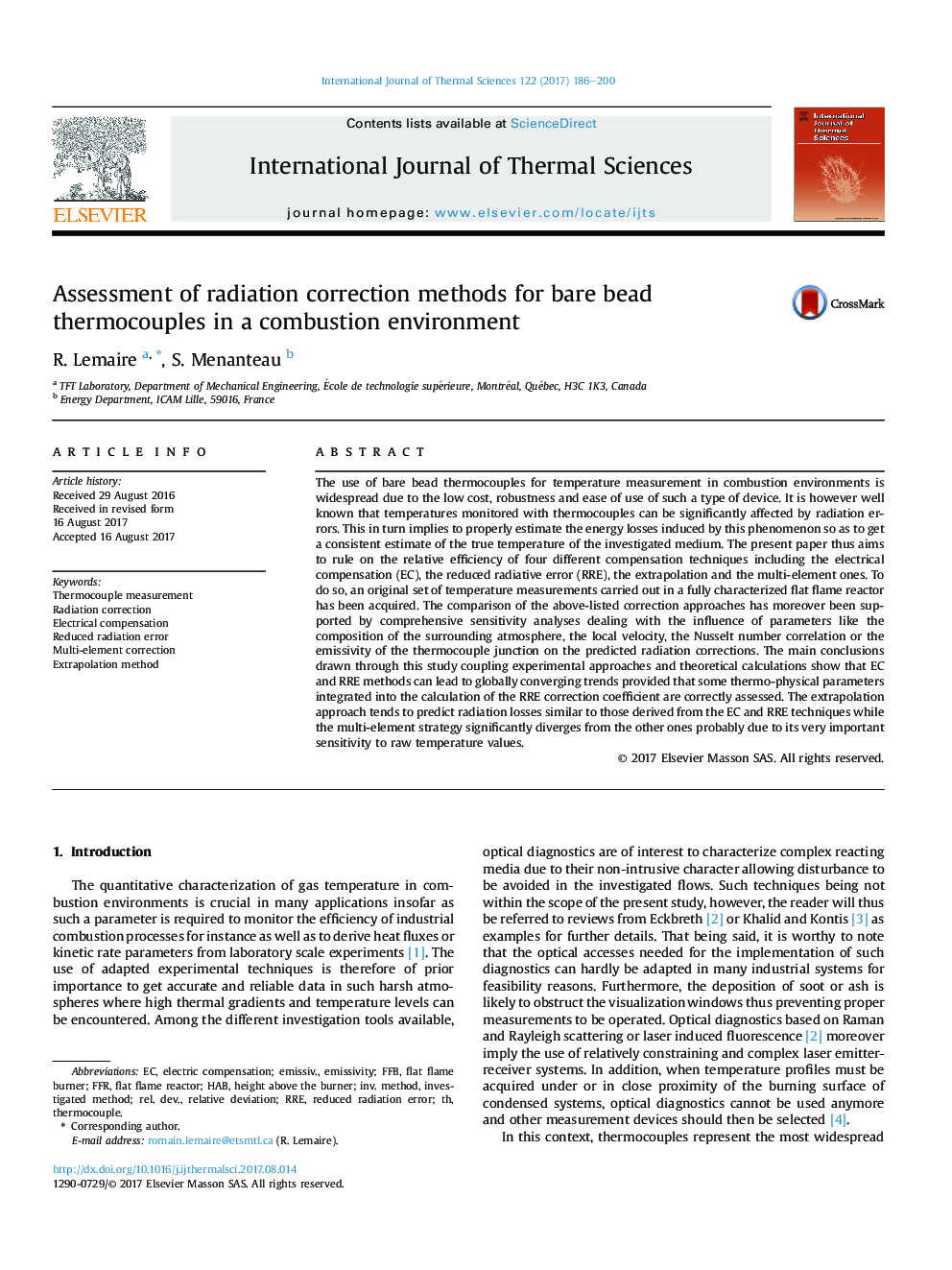| Article ID | Journal | Published Year | Pages | File Type |
|---|---|---|---|---|
| 4995198 | International Journal of Thermal Sciences | 2017 | 15 Pages |
Abstract
The use of bare bead thermocouples for temperature measurement in combustion environments is widespread due to the low cost, robustness and ease of use of such a type of device. It is however well known that temperatures monitored with thermocouples can be significantly affected by radiation errors. This in turn implies to properly estimate the energy losses induced by this phenomenon so as to get a consistent estimate of the true temperature of the investigated medium. The present paper thus aims to rule on the relative efficiency of four different compensation techniques including the electrical compensation (EC), the reduced radiative error (RRE), the extrapolation and the multi-element ones. To do so, an original set of temperature measurements carried out in a fully characterized flat flame reactor has been acquired. The comparison of the above-listed correction approaches has moreover been supported by comprehensive sensitivity analyses dealing with the influence of parameters like the composition of the surrounding atmosphere, the local velocity, the Nusselt number correlation or the emissivity of the thermocouple junction on the predicted radiation corrections. The main conclusions drawn through this study coupling experimental approaches and theoretical calculations show that EC and RRE methods can lead to globally converging trends provided that some thermo-physical parameters integrated into the calculation of the RRE correction coefficient are correctly assessed. The extrapolation approach tends to predict radiation losses similar to those derived from the EC and RRE techniques while the multi-element strategy significantly diverges from the other ones probably due to its very important sensitivity to raw temperature values.
Keywords
Related Topics
Physical Sciences and Engineering
Chemical Engineering
Fluid Flow and Transfer Processes
Authors
R. Lemaire, S. Menanteau,
